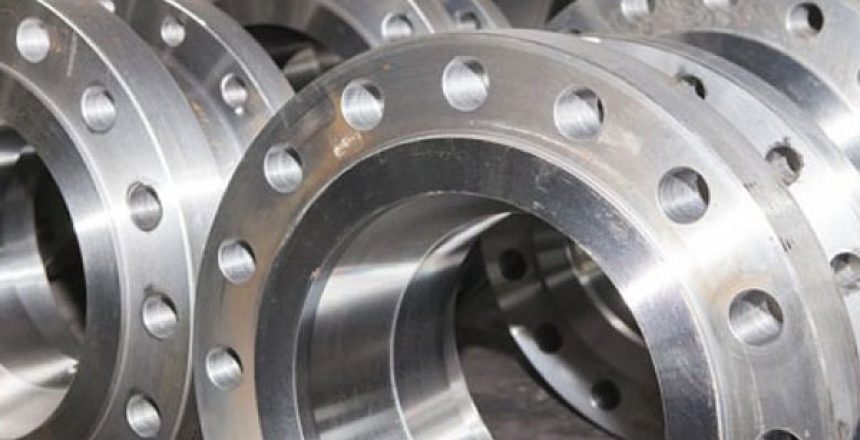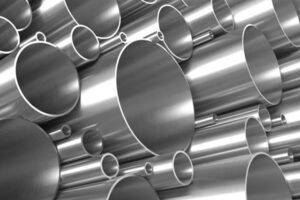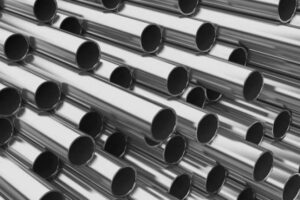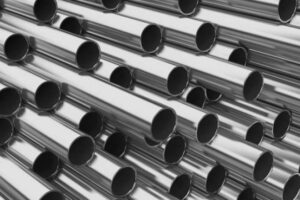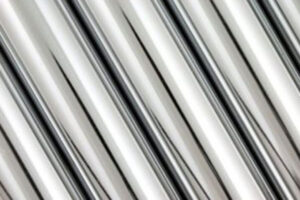Inconel® Alloy 625 & its Uses
Alloy 625 (made of nickel and chromium) is used because of its outstanding fabricability (including joining), high corrosion resistance, and high strength. Temperature for service ranges from supercooled to 982C. The toughening effect of niobium and molybdenum on the nickel-chromium structure gives Alloy 625 its strength property; consequently, precipitation hardening procedures are not necessary. This combination also leads to more resistance to a broad range of unusually harsh corrosive environments and high-temperature impacts such as carburization and oxidation.
Alloy 625 Uses
1. Maritime
Alloy 625 has properties that make it a perfect choice for maritime applications, including tolerance to local attack (crevice and pitting corrosion), high tensile strength, resistance to chlorine ions, stress-corrosion crack formation, and good corrosion fatigue strength.
Wire for docking cables, rotor blades for motor patrol boats, submarine auxiliary locomotion motors, swift submarine disconnectors, exhaust vents for navy boats, the outer sheath for underwater network cables, submersible transducer controls, as well as steam-line bellows are all applications for Alloy 625. Spring, bellows, seals for submerged controls, electrical wire connectors, rivets, flexure devices, as well as oceanic instrument parts are all possible applications.
2. Aviation Industry
The qualities of metal Alloy 625 that render it appealing to the aviation industry include high tensile strength, creep, and fracture strength; exceptional fatigue and heat strength; resistance to oxidation properties; and superb braze ability and weldability.
It has been used in aircraft cooling duct systems, exhaust systems, lift systems, honeycomb frameworks for engine control system housing, turbine shroud rings, hydraulic and fuel line tubing, bellows, spray bars, and heat exchanger tubing in integrated environmental systems. It is also appropriate for turbine seals, combustion system transition liners, rocket thrust-chamber ducting and compressor vanes.
3. Chemical Processing
Alloy 625‘s outstanding and adaptable corrosion resistance under a wide temperature range and increased pressure is the main reason for its widespread acceptance in the chemical processing sector. Its ease of fabrication is used to make a wide range of plant equipment components.
Because of its high tensile strength, it could be used in narrower vessels, enhancing heat transfer and reducing weight. Bubble caps, ducting, reaction containers, distillation columns, exchangers, transfer pipework, as well as valves are some applications that require the mix of strength and corrosion resistance provided by Alloy 625.
4. Nuclear Water Reactors
Alloy 625 is used in nuclear water reactors for control-rod components and reactor cores. The alloy is utilized because of its high tensile strength, outstanding uniform resistance to corrosion, resilience to stress crack formation, and outstanding pitting resistance in water temperatures ranging from 500F to 600F (260C to 316C). With its high permitted design strength at elevated temperatures, particularly from 1200 to 1400F (649-760C), Alloy 625 has been considered in sophisticated reactor concepts.
Microstructure
Alloy 625 is a face-centered-cubic solid-solution matrix stiffened Alloy. Carbides inherent in this type of alloy may be present. MC and M6C are two carbides that can be found (rich in niobium, molybdenum, nickel, and carbon). Furthermore, M23C6, a chromium-rich carbide, is found in solution-treated material exposed at cooler temperatures.
The toughening effect in the material, when exposed to temperatures around 1200F, is caused by the slow precipitation of gamma prime, a nickel-niobium-rich phase. Whenever The alloy is heated for an extended period in the intermediate range of temperature, this phase gradually transforms to orthorhombic Ni3 Nb. Extensive research into the stability of Alloy 625 after extended exposure in 1000 to 1800F temperature range has revealed the total lack of embrittling intermetallic phases like sigma.
Properties of Alloy 625
1. Superior Material Strength
Alloy 625‘s strength is due to its nickel-chromium base and the toughening mechanism of niobium and molybdenum. The interplay of niobium and molybdenum strengthens The alloy matrix, providing high strength without any need for precipitation-hardening treatment. This superalloy has a tensile strength of 690 MPa and a yield strength of 275 MPa.
2. Corrosion Resistance
Alloy 625‘s high alloy content allows it to endure a wide range of harsh corrosive environments. There is almost no attack in mild environments like the atmosphere, fresh and seawater, neutral salts, and alkaline media. The integration of chromium and nickel offers resistance to oxidizing chemical compounds in harsher corrosive environments, while the high molybdenum and nickel contents offer resistance to non-oxidizing climates.
Because of the high molybdenum composition, this alloy is highly resistant to crevice and pitting corrosion, and niobium serves to sustain The alloy against sensitization all through welding, preventing successive inter-granular cracking. Furthermore, the high nickel content prevents chloride ion crack formation. This combination of properties makes Alloy 625 helpful in a wide range of corrosive environments.
For example, it has been suggested as a building material for a storage tank that will handle chemical wastes such as hydrochloric and nitric acids – chemicals with opposite corrosion control. Materials resistant to one of these acids are usually severely harmed by the other.
3. Resistance to High Temperatures
Alloy 625, with a melting point of around 1300C and a thermal expansion coefficient of 1.28 x 10-51/K (at 20C), is resistant to a wide range of temperature extents, from low temperature to exceptionally high temperature.
The titanium and niobium mixtures of the oxide film on Alloy 625 increase dramatically at high temperatures in the presence of oxidizing agents, forming a natural protective coating in the material.
4. High Fabricability
Alloy 625 was intended to be more weldable than previous alloys, with no indications of cracking when subjected to strain and changes in temperature after welding. Because of its high creep resistance and yield strength, this superalloy is a great option for welding on tubes, pipework, and heavy machinery.
Working Instructions
Heating
Cold- or hot-formed parts are typically annealed at temperatures ranging from 1700F to 1900F for times proportional to thickness; higher temperatures may be used to tenderize material for additional cold work.
At 2000 to 2200F, Alloy 625 is solution-treated. These are metal temperatures that rely on batch operations and do not extend to consistent annealing, typically consisting of brief exposure inside the hot zone of a kiln set to extremely high temperatures. The cooling rate after heating has little or no effect on Alloy 625.
The residual stress in cold-drawn material is reduced by heating it at 1100 -1400F. When the sample is heated to 1600F, stress reduction is nearly complete.
Pickling
Like other alloys made of nickel and chromium, Alloy 625 forms a highly adhesive oxide when heated. This wouldn’t have happened if it had been bright annealed previously in a vacuum or completely dry hydrogen. Treatment in a salt bath (fused) before pickling is advised to remove the oxide layer formed while heating.
Hot and Cold Forming
Alloy 625 was specifically developed to sustain high strength even at hot-working temperatures. Thus it is resistant to deformation even at high temperatures. However, it is fabricated easily provided a powerful instrument is utilized.
During hot formation, The alloy should be heated at a furnace temperature of 2150F but should not go beyond that temperature. The piecework should be brought as close as possible to 2150F, but care should be taken not to go beyond. In the case of heavy forging, temperatures as low as 1850F can still work perfectly. The workpiece should be given a uniform reduction to prevent deformation of the duplex grain structure. For open die work, recommendations of the minimum reductions are between 15 to 20%. Standard processes are used to cold-form Alloy 625.
Cold work can improve tensile properties in mild-temperature applications. After 75-90 percent cold reduction, 0.010-0.020-in.-diameter wire establishes tensile strengths of more than 300,000 psi with good ductility.
Welding
Conventional welding procedures are easily used to join Alloy 625. Inconel® Filler Metal 625 and Inconel® Welding Electrode 112 are nickel-chromium-molybdenum alloy products used to weld Alloy 625 to itself and other materials. Deposited weld materials from both products, like Alloy 625, are corrosion resistant and oxidation and have greater strength and toughness from supercooling to 1800F.
They do not require post-weld heat treatments to keep their tensile strength and ductility. When welding Alloy 625 to dissimilar metals, both products can withstand high dilution levels while retaining their unique properties.
Filler Metal 625 and Welding Electrode 112 also are “overmatching composition” welding products for iron nickel-chromium-molybdenum corrosion-resistant alloys such as 316 and 317 stainless steels, 6% molybdenum ultra-austenitic stainless steels, Alloys 825 and 020, and alloy G-3. The higher alloy material of Alloy 625 welding products compensates for the effects of primal segregation in the weld zone, which can cause preferential weld corrosion.
The Inconel® Filler Metal 625 is used in gas-tungsten-arc and other gas-metal arc processes
The functioning characteristics of this nickel-chromium filler metal are comparable to those of other nickel-chromium filler metals. The Inconel® Welding Electrode 112 is ideal for protected metal arc welding. The slag generated is hard, but it dissociates in large sections when fragmented, leaving a clean weld.
As we have seen above, Alloy 625 is applicable in many industrial sectors due to its exceptional properties. This alloy has better performance than many other available alloys and therefore deserves to be the first go-to option for any industry.

